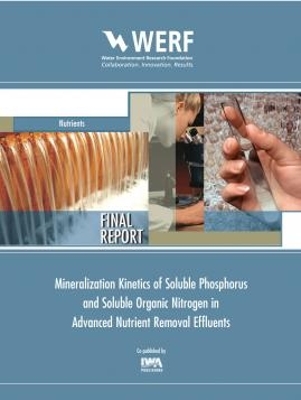Given the importance of the watershed protection plans, direct determination of phosphorus (P) mineralization kinetics in advanced wastewater treatment facility effluents is crucial for developing the most protective strategies for minimizing eutrophication in receiving surface waters. In this study, bioassays were used to determine the mineralization rate of dissolved P in effluents from a broad range of advanced nutrient removal technologies (MBR, traditional biological, tertiary membrane, Blue PROTM, and etc.). Mineralization kinetics were described by a gamma model and three first-order decay models. A traditional one-pool model correlated poorly with the experimental data (i.e., r2= 0.73 +/- 0.09), whereas two and three-pool models performed much better (i.e., r2> 0.9). These models provided strong evidence for the existence of recalcitrant P in the effluents from these facilities. The Gamma model showed the mineralization of organic P followed a reactive continuum and further suggested the partitioning of P loads with different bioavailability levels should be accounted for the future modeling practices. Although the gamma model should be considered as theoretically correct model, the results also suggested simpler two and three-pool models could provide similar fits depending on the effluents.
WERF Report: NUTR1R06p
- ISBN10 1780407300
- ISBN13 9781780407302
- Publish Date 1 October 2015
- Publish Status Active
- Publish Country GB
- Imprint IWA Publishing
- Format eBook
- Pages 106
- Language English
